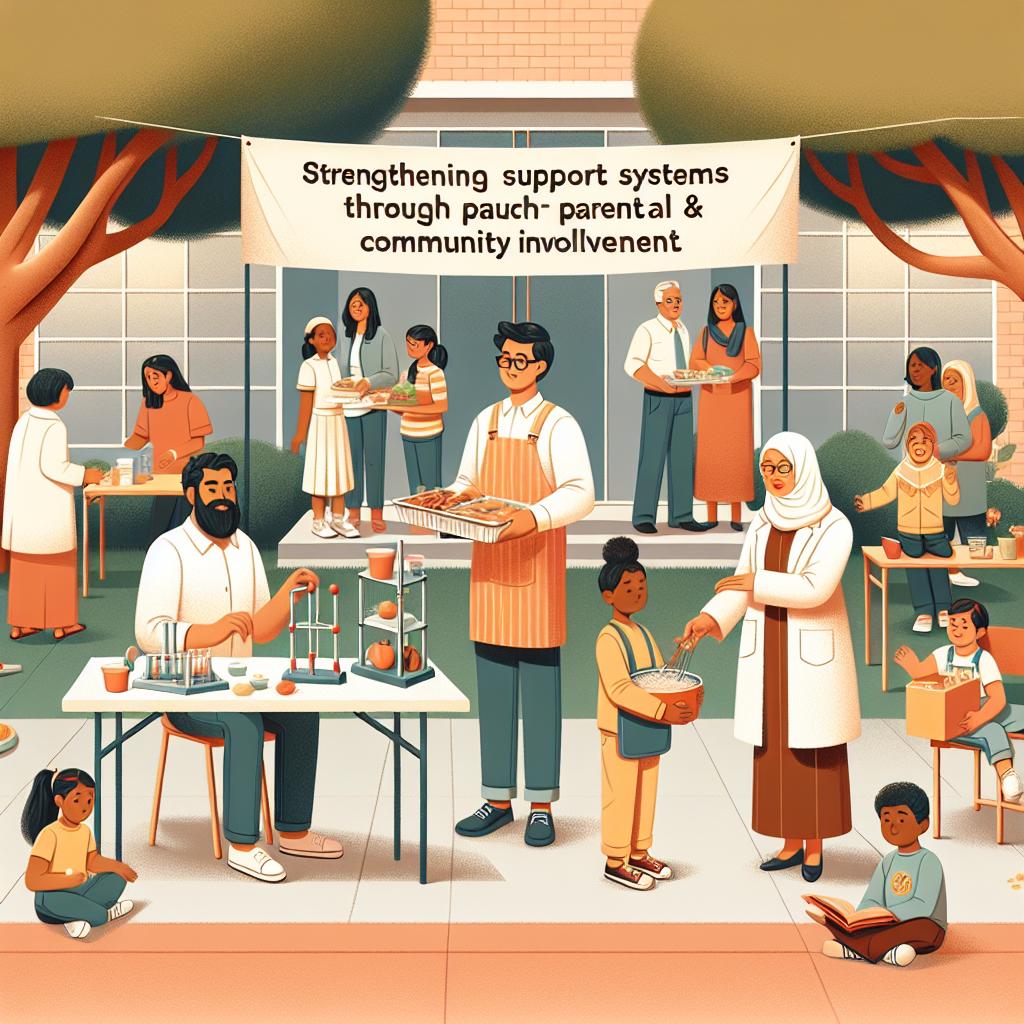Strategies for Teaching English Language Learners (ELL)

In the vibrant mosaic of today’s classrooms, the presence of English Language Learners (ELL) breathes life into the learning environment, infusing it with a rich tapestry of languages, cultures, and perspectives. However, these diverse ingredients also craft a unique challenge for educators striving to blend inclusivity and effectiveness in their teaching practices. This confluence of diversity invites a crucial question: how can teachers navigate the intricate landscape of ELL instruction to unlock the full potential of every student? This article embarks on an explorative journey to unveil a suite of strategies, tailored to elevate the teaching and learning experience for English Language Learners. From leveraging linguistic assets to fostering a culturally responsive classroom, we delve into the multifaceted approaches that can transform obstacles into opportunities, ensuring every voice is not just heard, but celebrated.
Table of Contents
- Building a Strong Foundation: Vocabulary and Grammar Essentials
- Interactive Learning: Engaging Activities and Games
- Leveraging Technology: Digital Tools for Language Acquisition
- Classroom Dynamics: Creating an Inclusive and Supportive Environment
- Assessment Techniques: Measuring Progress and Providing Feedback
- Parental and Community Involvement: Strengthening Support Systems
- Q&A
- Closing Remarks

Building a Strong Foundation: Vocabulary and Grammar Essentials
For many English Language Learners, building a vocabulary arsenal and mastering grammar basics are critical. Essential strategies incorporate **context-based learning**, where vocabulary is taught through storytelling, songs, and real-life situations, helping students relate words to their own experiences. Interactive activities such as **role-playing** and **word games** make learning both engaging and practical. Additionally, combining **visual aids** like flashcards and labeled diagrams with auditory resources supports diverse learning styles, ensuring comprehension and retention.
Grammar, often viewed as the backbone of language, can be imparted through a mix of **inductive and deductive approaches**. For instance, using simple stories to highlight grammatical structures allows students to infer rules naturally. Reinforce these lessons with **fun drills and practice exercises** to solidify understanding. Here’s a simple table to illustrate some activities beneficial for vocabulary and grammar learning:
| Activity | Description |
|---|---|
| Word Mapping | Connect related words in a visual web |
| Sentence Jumbles | Rearrange words to form sentences |
| Grammar Bingo | Match sentences to the correct structure |

Interactive Learning: Engaging Activities and Games
One powerful way to engage English Language Learners is through interactive activities that make learning enjoyable and effective. **Role-playing** exercises, for instance, allow students to practice conversational skills in real-life scenarios, bolstering their confidence and fluency. **Storytelling games** encourage creativity while improving vocabulary and comprehension. Implementing **digital tools** like language learning apps can also provide interactive exercises that adapt to each student’s proficiency level.
**Collaborative games** such as word bingo and language puzzles promote teamwork and enhance critical thinking skills. Students can work together to solve riddles or complete language-based challenges, fostering a sense of community. Incorporating **kinesthetic activities** like charades or scavenger hunts can make vocabulary acquisition a dynamic experience. Below is a simple example of a word bingo list that can be adapted for classroom use:
| Word | Category |
|---|---|
| Apple | Fruit |
| Happy | Emotion |
| Swim | Verb |
| Friend | Noun |

Leveraging Technology: Digital Tools for Language Acquisition
Embracing modern technology can greatly enhance the learning experience for English Language Learners (ELL). Various digital tools offer innovative ways to improve language acquisition by providing interactive and immersive environments. For instance, **language learning apps** like Duolingo and Babbel utilize gamification to make learning fun and engaging. These apps often include features like daily challenges, leaderboards, and virtual rewards to motivate learners. Additionally, **virtual reality (VR) environments** simulate real-world conversations, allowing learners to practice speaking and listening in a safe and controlled setting. Integrating such tools in the classroom can not only foster a more dynamic learning experience but also cater to various learning styles.
Another effective approach is leveraging **online collaboration platforms** and **social media**. Tools like Google Classroom and Microsoft Teams facilitate seamless communication between teachers and students, enabling real-time feedback and collaborative assignments. Furthermore, social media platforms such as Twitter and Instagram can be used to create class-specific hashtags and groups where students can share resources, practice writing, and even interact with native speakers. By combining these digital tools with traditional teaching methods, educators can create a more holistic and engaging curriculum for ELL students.
| Tool | Feature | Benefit |
|---|---|---|
| Duolingo | Gamified Lessons | Increased Engagement |
| Google Classroom | Real-Time Feedback | Improved Communication |
| VR Environments | Simulated Conversations | Enhanced Speaking Skills |

Classroom Dynamics: Creating an Inclusive and Supportive Environment
One of the most impactful methods to enhance learning for English Language Learners is to **foster a sense of belonging within the classroom**. This can be achieved through inclusive activities that allow every student to participate, regardless of their language proficiency. Simple strategies include pairing ELL students with peer buddies who speak both their native language and English, celebrating cultural diversity, and utilizing visual aids and realia in lessons to bridge language gaps. Teachers can also generate a welcoming atmosphere by setting up a multilingual classroom environment, featuring signs, posters, and resources in multiple languages. This shows respect for students’ backgrounds and promotes a supportive learning space.
Effective communication is another cornerstone of an inclusive classroom. Teachers should employ various techniques to ensure comprehension and engagement from all students. These techniques can range from using **gestures and expressions**, to implementing **group work** where students can take on diverse roles that suit their abilities. Some more strategies include:
- **Simplifying instructions** without diluting the content
- **Leaning on technology** with translation apps and language learning software
- **Encouraging storytelling and dialogues** to practice language in context
- **Offering consistent and constructive feedback**
| Activity | Purpose |
|---|---|
| Peer Buddy System | Encourages peer learning and support |
| Visual Aids | Enhances understanding of concepts |
| Multilingual Resources | Celebrates diversity and aids comprehension |

Assessment Techniques: Measuring Progress and Providing Feedback
To effectively measure the progress of English Language Learners (ELLs) and provide actionable feedback, employing a mix of assessment techniques can be invaluable. **Formative assessments** such as quick quizzes, one-minute check-ins, and classroom polls can give immediate insights into a student’s grasp of the material. These low-stakes evaluations encourage continuous learning and adjustment. **Peer assessments** also play a crucial role, as students often feel more at ease receiving feedback from their classmates. Techniques such as **group projects**, **peer reviews**, and **collaborative writing assignments** can foster a more inclusive learning environment while giving teachers a clear idea of the varying proficiency levels within the classroom.
Moreover, technology can offer sophisticated means of assessment and feedback. Digital tools like **learning management systems (LMS)** and **educational apps** allow for real-time tracking and personalized feedback. They can even adapt the difficulty of tasks based on student performance. Implementing **self-assessment techniques** can help students become active participants in their learning journey. Tools such as **reflection journals**, **progress tracking charts**, and **goal-setting frameworks** enable learners to assess their own growth and understand areas needing improvement.
| Technique | Description | Purpose |
|---|---|---|
| Formative Assessments | Quick quizzes and polls | Gauge understanding |
| Peer Assessments | Group projects, peer reviews | Encourage collaboration |
| Digital Tools | LMS and educational apps | Track and personalize feedback |
| Self-Assessment | Journals, progress charts | Empower student autonomy |

Parental and Community Involvement: Strengthening Support Systems
Embracing parental and community involvement is crucial to fostering a supportive environment for English Language Learners. Collaboration between schools and the community can be enhanced through **workshops and informational sessions** tailored to ELL parents. These sessions can cover topics like the school curriculum, language acquisition strategies, and ways parents can assist their children at home. Additionally, schools can create **bilingual resources and newsletters** to keep non-English-speaking parents informed and engaged.
- **Organize cultural exchange events** where both students and parents can share their backgrounds, promoting mutual respect and understanding.
- **Partner with local organizations** to offer **tutoring programs** that support ELL students both academically and socially.
- **Encourage volunteer opportunities** for parents within the school to foster a sense of community and belonging.
| Strategy | Benefit |
|---|---|
| School Workshops | Empower parents with knowledge |
| Bilingual Newsletters | Bridge communication gaps |
| Cultural Events | Promote inclusivity |
Q&A
Q&A: Strategies for Teaching English Language Learners (ELL)
Q: What are the key challenges faced by English Language Learners (ELL) in the classroom?
A: ELL students often grapple with language barriers that affect their ability to understand instructions and participate in class discussions. They may also face cultural differences that can influence their social integration and learning styles. Additionally, the varied proficiency levels in English among ELL students can pose a significant challenge for educators in providing tailored support.
Q: How can teachers create an inclusive classroom environment for ELL students?
A: To foster inclusivity, teachers can adopt a multi-faceted approach:
- Cultural Sensitivity: Incorporate materials and examples that reflect diverse cultures.
- Visual Aids: Use images, charts, and flashcards to complement verbal instructions.
- Collaborative Learning: Encourage group work that pairs ELL students with native speakers to facilitate peer learning.
- Safe Space: Create an environment where mistakes are seen as learning opportunities, thus encouraging ELLs to practice without fear.
Q: What role does technology play in supporting ELL students?
A: Technology offers a plethora of tools to aid ELL students. Language learning apps, online dictionaries, and educational software can provide interactive vocabulary and grammar exercises. Platforms like Google Translate and speech-to-text features can assist in real-time communication and comprehension. Virtual classrooms and video conferencing tools also allow for flexible, personalized learning experiences.
Q: Can you provide examples of effective instructional strategies for ELL students?
A: Certainly! Here are a few strategies that have been found effective:
- Scaffolded Instruction: Break lessons into manageable chunks and gradually remove support as students gain confidence.
- Repetition and Reinforcement: Regularly revisit key concepts and vocabulary to reinforce learning.
- Bilingual Resources: Utilize materials that are available in both the student’s native language and English to bridge understanding.
- Interactive Activities: Engage students in hands-on activities, such as role-plays and collaborative projects, that promote language use in a practical context.
Q: How important is family involvement in the education of ELL students?
A: Family involvement is crucial. Engaging with families can provide insights into the student’s background, learning needs, and cultural context. Schools can facilitate this by hosting multilingual parent-teacher conferences, providing translated communication materials, and encouraging family participation in school events. This partnership helps create a supportive network that bolsters the student’s academic and social development.
Q: What assessment methods are best suited for ELL students?
A: Traditional assessments may not always accurately reflect ELL students’ knowledge and skills. Alternative methods such as:
- Formative Assessments: Use ongoing assessments like quizzes, oral presentations, and class participation to gauge understanding.
- Portfolios: Allow students to demonstrate their progress through collected works and projects.
- Performance-based Assessments: Assess students through practical applications of language, like writing essays or completing science experiments, which showcase their learning in context.
Q: Any concluding tips for educators teaching ELL students?
A: Patience and empathy are key. Recognize that language learning is a gradual process and celebrate small milestones to keep ELL students motivated. Continuous professional development on the latest ELL strategies can also empower educators to better support their students. Lastly, fostering a growth mindset both for students and teachers can create a positive and resilient learning environment.
Closing Remarks
As the final curtain draws on our exploration of strategies for teaching English Language Learners, one thing becomes abundantly clear: the heart of effective education lies in understanding, adaptability, and empathy. These strategies are more than just tools; they are bridges connecting students to new possibilities, facilitating a journey that extends beyond the classroom walls. By employing a diverse array of methods—ranging from fostering a supportive environment to integrating technology and culturally responsive teaching—we pave the way for our ELL students to not only grasp a new language but also to thrive within it.
As educators, our mission transcends mere instruction. We become the architects of our students’ futures, helping them to construct their own linguistic and cultural landscapes. In doing so, we uphold the spirit of inclusivity and empowerment. So, as you depart from this guide, carry with you the reminder that every lesson taught with passion and patience sows the seeds of confidence and curiosity. Let us continue to learn from each other and share our successes, ensuring that every English Language Learner stands on the solid ground of comprehension and opportunity. Here’s to the endless journey of teaching and learning, where every word, gesture, and effort resonates with purpose and potential.

 Bachelor of Education in Secondary Teaching
Bachelor of Education in Secondary Teaching 












Responses